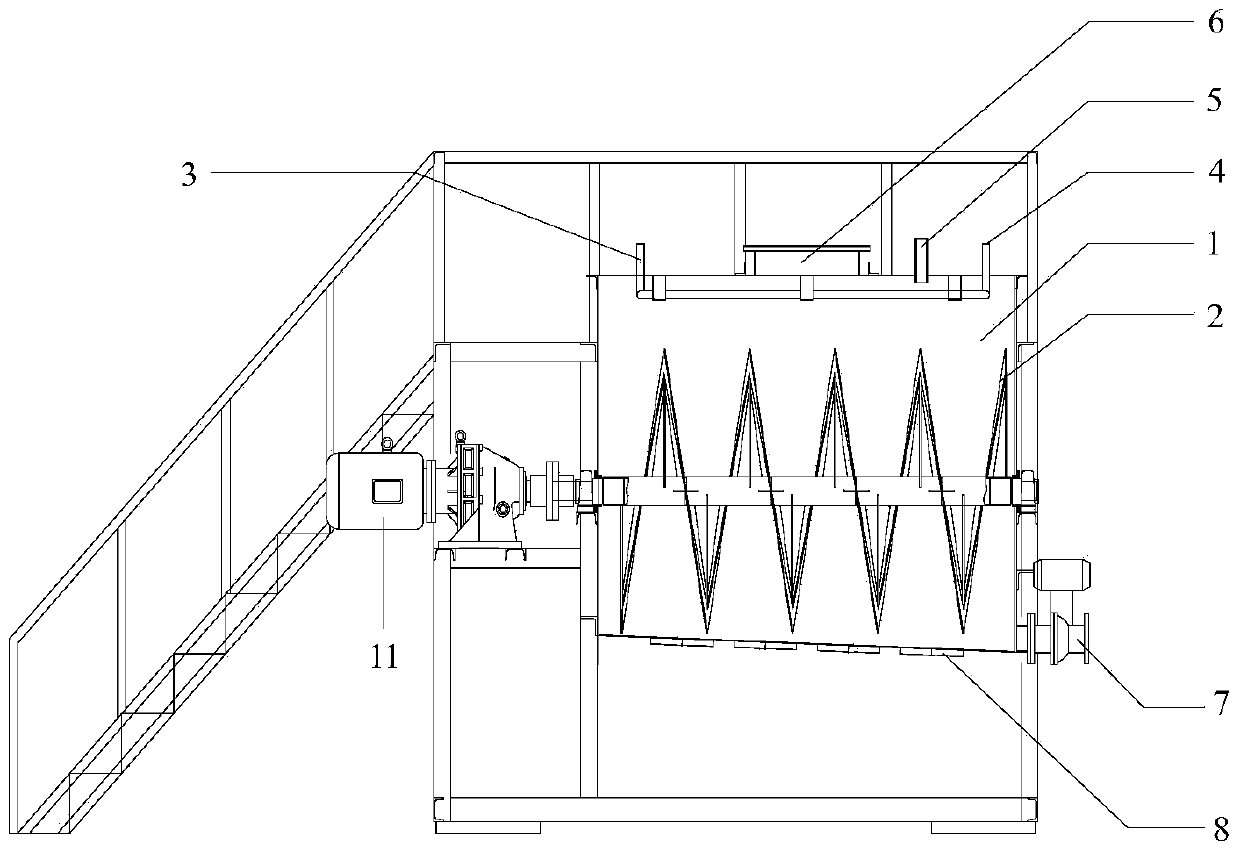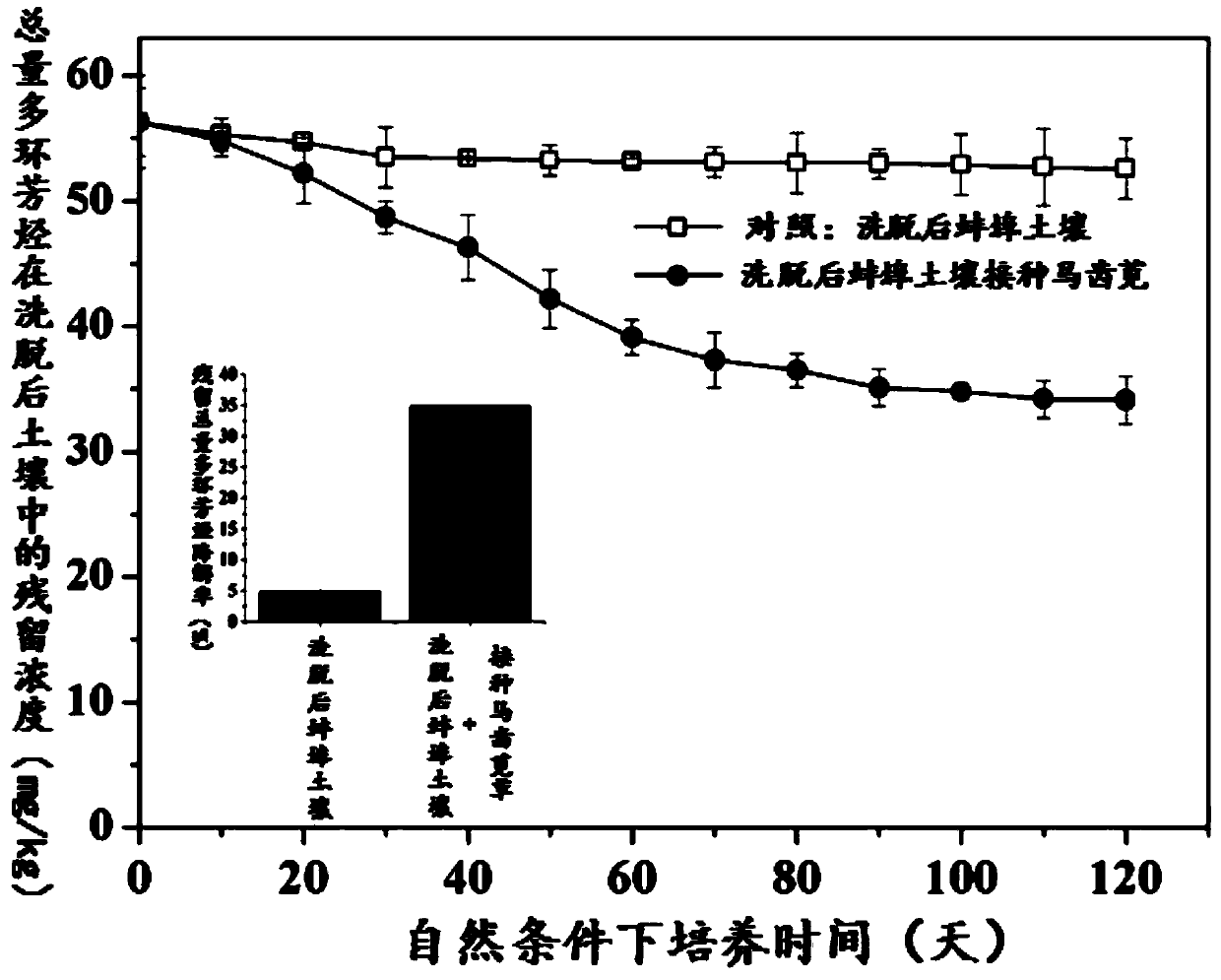Chemistry-plant combined remediation method of fluoride-type combined pollution site soil
A combined pollution and joint repair technology, applied in the field of soil remediation of contaminated sites, can solve the problems of less consideration in the restoration of the diversity and stability of microbial ecological functions in the soil environment, large environmental interference factors, and long operation cycles, etc., to help The diversity and stability of microbial ecological functions in polluted soil environments, the prospect of wide application, and the effect of easy operation
- Summary
- Abstract
- Description
- Claims
- Application Information
AI Technical Summary
Problems solved by technology
Method used
Image
Examples
Embodiment 1
[0043] For the total concentration of PAHs greater than 10 mg kg -1 And less than 100 mg kg -1 , Pb concentration greater than 600 mg kg -1 And less than 1000 mg kg -1 , with a Cd concentration greater than 1 mg kg -1 and less than 10 mg kg -1 , Cr concentration greater than 1000 mg kg -1 And less than 2000 mg kg -1 , Ni concentration greater than 200 mg kg -1 And less than 500 mg kg -1 , the concentration of perfluorinated compounds is greater than 2000 mg kg -1 And less than 2500 mg kg -1 Contaminated site soil:
[0044] The test soil was collected from a polluted site of a closed coal-fired thermal power plant in Liyang, Jiangsu Province. The soil samples were air-dried, the impurities were sorted out, and the soil samples were passed through a 10-mesh sieve for later use. The basic physical and chemical properties of the soil are pH 6.5, organic matter content 18.7 g kg -1 , total nitrogen 1.3 g kg -1 , available nitrogen 58.6 mg kg -1 , total phosphorus 0.36...
Embodiment 2
[0049] For the total concentration of PAHs greater than 100 mg kg -1 And less than 1000 mg kg -1 , Pb concentration greater than 1000 mg kg -1 And less than 5000 mg kg -1 , with a Cd concentration greater than 10 mg kg -1 and less than 50 mg kg -1 , Cr concentration greater than 2000 mg kg -1 And less than 5000 mg kg -1 , Ni concentration greater than 500 mg kg -1 And less than 1000 mg kg -1 , the concentration of perfluorinated compounds is greater than 2500 mg kg -1 And less than 5000 mg kg -1 Contaminated site soil:
[0050] The test soil was collected from the polluted site of a heating plant in a typical area in the suburbs of Bengbu City, Anhui Province. The soil samples were air-dried, the impurities were sorted out, and the soil samples were passed through a 10-mesh sieve for later use. The basic physical and chemical properties of the soil are pH 6.1, organic matter content 11.2 g kg -1 , total nitrogen 1.1 g kg -1 , available nitrogen 43.7 mg kg -1 , to...
Embodiment 3
[0055] For the total concentration of PAHs greater than 1000 mg kg -1 , Pb concentration greater than 5000 mg kg -1 , Cd concentration greater than 50 mg kg -1 , Cr concentration greater than 5000 mg kg -1 , Ni concentration greater than 1000 mg kg -1 , the concentration of perfluorinated compounds is greater than 5000 mg kg -1 Contaminated site soil:
[0056] The test soil was collected from the polluted site of a coking plant in a typical area in the suburbs of Wuhan, Hubei Province. The soil samples were air-dried, the impurities were sorted out, and the soil samples were passed through a 10-mesh sieve for later use. The basic physical and chemical properties of the soil are pH 6.9, organic matter content 15.6 g kg -1 , total nitrogen 1.6 g kg-1 , available nitrogen 53.7 mg kg -1 , total phosphorus 0.31 g kg -1 , available phosphorus 71.6 mg kg -1 . The soil mechanical composition is 23.6%wt sand, 56.1%wt loam, and 20.3%wt clay. The contents of perfluorinated com...
PUM
 Login to View More
Login to View More Abstract
Description
Claims
Application Information
 Login to View More
Login to View More - R&D
- Intellectual Property
- Life Sciences
- Materials
- Tech Scout
- Unparalleled Data Quality
- Higher Quality Content
- 60% Fewer Hallucinations
Browse by: Latest US Patents, China's latest patents, Technical Efficacy Thesaurus, Application Domain, Technology Topic, Popular Technical Reports.
© 2025 PatSnap. All rights reserved.Legal|Privacy policy|Modern Slavery Act Transparency Statement|Sitemap|About US| Contact US: help@patsnap.com



